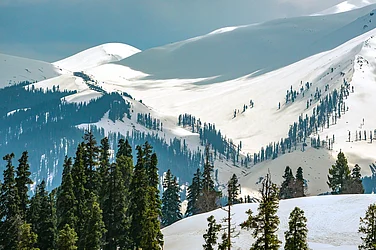In 2006, back in Kolkata, a movement under the banner of Youth for Equality was gaining strength. The students mostly of the medical colleges turned their campuses into protest sites. They were not categorically against reservation, as they said. They were against ‘caste-based’ reservation. Ananya, a 21-years-old student of Calcutta Medical College, who herself belonged to OBC category while leading the movement told, “Look, I belong to OBC category but my family is financially strong enough to finance my education. I don’t need reservation. Affirmative actions should be for those who are financially deprived. We are here to float the idea of a casteless society.”
Nothing was new in her words. Rather, it is the time-tested trope that has been used by the anti-caste-based reservation agitators since the days of constituent assembly debate. So, when the Supreme Court in Janhit Abhiyan v Union of India ratified the 103rd constitutional amendment allowing 10% reservation to the Economically Weaker Section (EWS) among the upper castes, it simply followed the paths of its upper caste-brethren for whom ‘financial barrier’, not the caste, is the strongest deterrence to the progress of the backward classes.
The majority judgement of Justices Dinesh Maheshwari, Bela Trivedi and J B Pardiwala not only upheld constitutionality of an act that mandates 10% reservation to the upper caste people from poor financial background, it also excludes Scheduled Castes, Scheduled Tribes and non-creamy layer Other Backward Classes from the newly inserted clauses of 15(4) and 16(4). Justice Ravinder Bhat and the outgoing CJI U U Lalit had even taken note of this in their minority judgement and said that exclusion of SCs, STs and OBCs from the EWS facilities amounts to create “artificial boundary between similarly placed deprived persons only on the basis of caste” and hence is violative of the equality principle.
Both the sides in the constitutional bench though contradicted each other in terms of legal interpretations, they were on the same board pertaining to using ‘economic’ condition as a benchmark for providing reservation. In this context, it is prudent to look at what does reservation stand for? What were the moral values it ought to uphold?
Justice Chinnappa Reddy while hearing K C Vasanth Kumar and Another v State of Karnataka in 1985 remarkably said that the reservations were intended for ‘Parity, not Charity’. The rest of the judgment, as Alok Prasanna Kumar, a senior resident fellow at Vidhi Centre for legal policy in his recent EPW article says, “is a lucid and evocative summation of the social justice goals of the scheme of reservations in India”.
Since the very first reservation in India as implemented by the king of Kohlapur in 1902 to the latest efforts during the drafting of constitution, reservation has always been a mechanism to achieve social justice and dignity for the marginalised community.
On July 26, 1902, when the first ever notice on reservation had been issued from Kohlapur king Rajarshi Shahu’s office, it was directed toward the backward classes, precisely the non-Brahmin castes whose presence in the administrative offices were negligible. The 50% reservation for the non-Brahmins as declared by Shahu, however had a root of humiliation.
In October, 1899 when Shahu was performing some religious rituals in Panchaganga river, he found that the priests were reciting verses from Purana instead of Vedas. Upon enquiry, he got to know that as Marathas were considered Shudras, they were not allowed to recite Vedas as the Brahmins had monopoly on it. This lack of dignity of the Maratha priests had badly hit the western-educated liberal King.
In a similar manner, when the king of Mysore had declared reservation for the backward castes in 1922, the objective was to achieve dignified lives and social mobility for the backward castes. The draft committee of constitution while agreeing to provide reservation to the SCs and STs, emphasised on social and educational backwardness, not the economic underprivilege. So, will the caste-based reservation itself lead to economic upliftment?
Social scientist and anti-caste activist Gail Omvedt in her 1990 EPW paper titled Twice-Born Riot against Democracy significantly said that is the last objective of the caste-based reservation. “Caste-based reservations cannot remove poverty, cannot end economic exploitation; they cannot "uplift the poor”. They can only make some of the poor, non-poor”, writes Omvedt. The reservation actually contributes to “end the caste- monopoly of organised sector jobs, especially of the public sector.”
S S Gill, the secretary of the Mandal commission that recommended 27% reservation for the OBCs evoking Mandal era in Indian politics, even said that the caste-monopoly of thousand years had restricted the access of Shudras and Ati-Shudras to wealth, power and status. As, there is no caste census it is difficult to identify the percentage of upper castes in the public sector jobs but a few studies reveal to us the utter disparity.
A study by Ashwini Deshpande and Rajesh Ramachandran titled Viewing Caste Inequality Upside Down: The Perversity of Special Schemes for Brahmins in South India conducted in three southern states Andhra Pradesh, Karnataka and Telangana show Brahmins are far ahead than Shudras and Dalits in terms of all the human indexes starting from school years to liveability. In 2015, an RTI report showed, that even after 20 years of reservation less than 12% of the officers in central government ministries belonged to SC/ST or OBC category.
Caste-based reservation thus was directed not to alleviate economic misfortune, rather it had the objective of providing them with the social wealth that the society values. Sociologist Dipankar Gupta in his 1997 paper titled Positive Discrimination and the Question of Fraternity-Contrasting Ambedkar and Mandal on Reservations rightly said, “Reservations for the ex-untouchables and tribes were instituted because of the fact that they lacked those assets which a market-oriented liberal society values.” So, the moot point of reservation was always community-centric and it was never an individual-based poverty alleviation programme.
In 1978, then the Deputy Prime Minister Babu Jagjivan Ram was insulted while inaugurating a statue in Varanasi for being a Dalit. Closer to our time former Bihar CM Jiten Ram Manjhi faced almost similar humiliation for his Mahadalit identity.
If a Dalit deputy-PM or a CM in a country is not beyond humiliation and degradation, what is the condition if the commoners is anybody’s guess. As the SC has now upheld ‘economic criterion’ as a legitimate ground to give reservation, someway or other the foundational ideation behind the reservation in India itself has been challenged. The EWS quota may help certain upper caste individuals to get rid of poverty but the question remains- was it for that the founding parents of India implemented reservation at the first place?



























